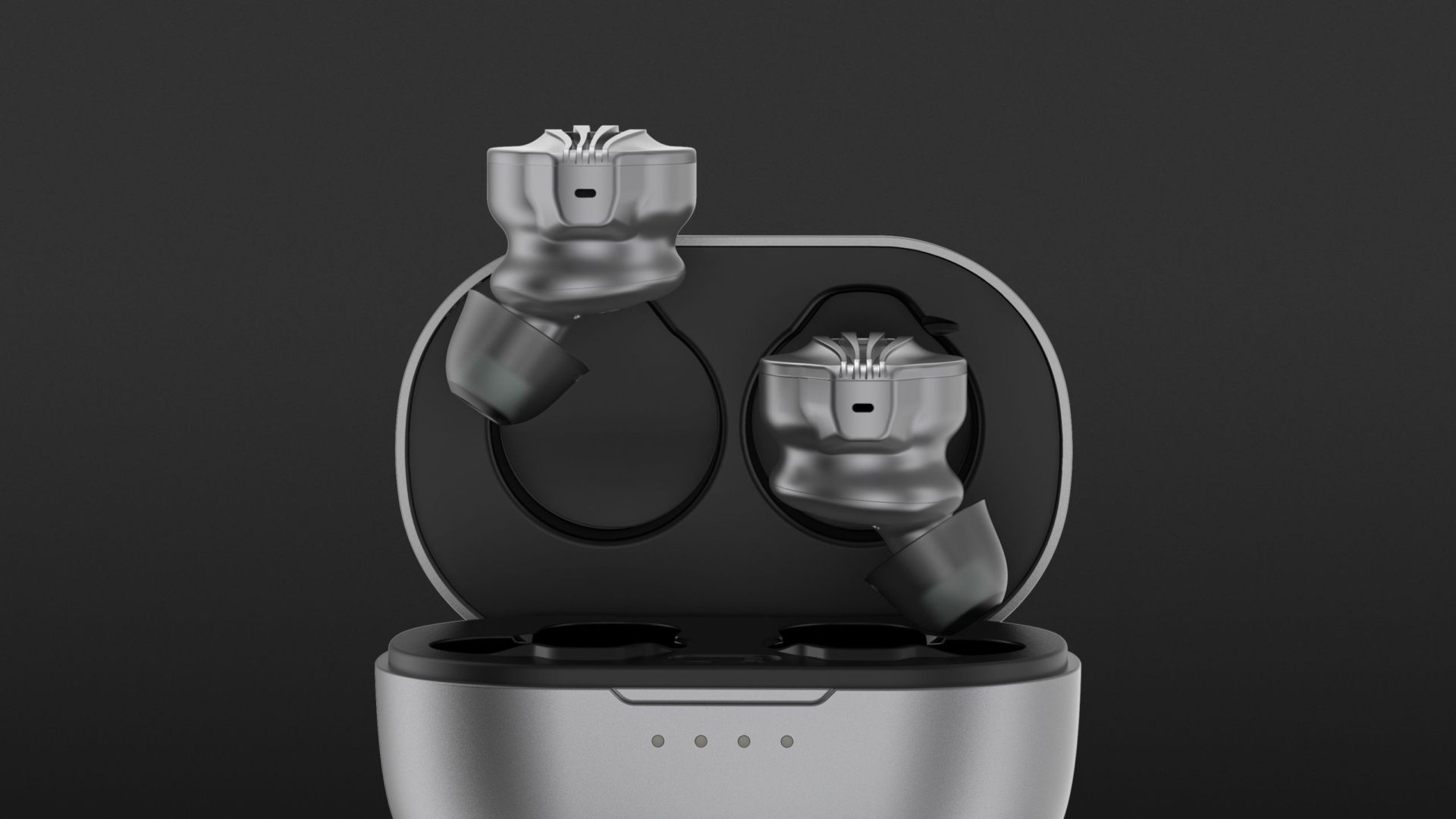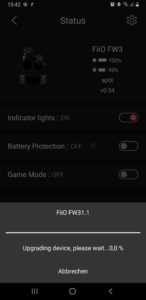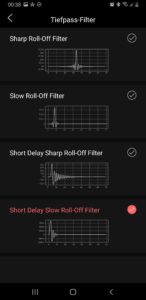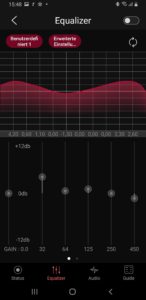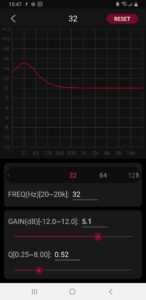Aside from their slightly limited equaliser functions, the FW3 are not particularly inferior to their more expensive sister model, the FW5. And as with the FW5, I would recommend the FW3 as good in-ears primarily aimed at hi-fi enthusiasts. After all, if you are one of those, then you should have a little knowledge and enjoy using the flexible 10-band equaliser to bend the sound characteristics towards your ideal curve.
- Very neutral sound
- Good spatial representation
- Professional mul
- Very good customisation options (via app)
- Function buttons are difficult to operate
The FW3 are approximately 50 euro cheaper than their sister model the FW5 , which our editorial team gave a top rating.
FiiO FW3: What do you get for around 100 euros?
The converters (AK4332) and the Bluetooth chip (Qualcomm QCC5141) installed in the FW3 are identical to those used in the FW5 and promise to provide correspondingly low-loss and dynamic decoding of the incoming audio material.
However, the FW3’s driver system has been slimmed down, while the top-of-the-range model is equipped with a three-way system, these only use a single 10-millimetre carbon diaphragm (which is not necessarily a bad thing). You will also have to make do without the convenience of Active Noise Cancelling (ANC) – apart from the passive damping provided by the in-ears themselves.
Other than that, the technical features are the same, and you can look forward to Bluetooth 5.2 connectivity with high-resolution LHDC, aptX Adaptive and aptX codec support. With the accompanying app, FiiO also provides a pretty powerful tool for customising the sound, including a sophisticated 10-band equaliser. But more on that later.
Look & Feel
The FiiO FW3 are available in a choice of silvery grey (“Interstellar Gray”) or white (“Moonlight White”). We opted for the headphones with a grey finish for our test. However, this is merely a colour, and the material used is plain plastic, something that is all too noticeable when you touch it – especially with the charging case. But that’s fine in the circumstances: the earphones only weigh 6.2 grams each. Nevertheless, these lightweight headphones have enough battery power for around seven hours of music entertainment and can be fully charged in just one hour. The charging case holds battery reserves for two full charges, meaning you can enjoy a total of 21 hours of music before you have to search for mains power again.
Speaking of power: You shouldn’t get too wet at the beach or pool, as the IPX class only goes up to level 4 (protection against splashing water). But you don’t need to change position while dozing on the sun lounger, as there are two small buttons on the top of each earpiece that can be used to call up a complete set of media and telephone control functions. However, in practice, these are very fiddly to operate as they are very small and also – depending on the shape of your ears – get in the way of the bulge of the outer ear. The situation is different when the in-ears sit in the ear: Once you have chosen the pair that best suits you from the six pairs of ear moulds that are supplied, the FW3 are comfortable to wear for hours on end. Important: When adjusting the volume via the earpieces, you need to realise that you are not (!) adjusting the volume of the player but that of the integrated amplifier. Therefore, for example, it is possible that you can set the volume on your mobile phone to full, and the in-ears will remain silent (and vice versa).
FiiO app
Many functions have been packed into the FiiO Control app, which is available for free download for both iOS and Android. There are many settings available in the app, from battery protection (charging only up to 80%), the optional gamer mode (reduced latency), setting the time until standby when not in use, to the preferred Bluetooth codec (aptX, AAC, LHDC). The option to adjust the balance between the two in-ears and between calls and signal tones is something that is also far too rare with other headphones. However, when the equaliser is called up, it becomes clear why FiiO aims to be in the hi-fi segment; there are ten frequency bands available to adjust the sound to suit personal preferences. The range of functions has been slightly limited compared to the FW5, however, and it is not possible to switch between the two characteristics of peak and shelf, which is a real shame. Shelving filters are, of course, the method of choice for making smooth frequency adjustments, especially in the high and low-frequency range. The operating frequency, the Q factor (0.25 – 8) and the level range (+/- 12 dB) are also adjustable. And things can get really nerdy as it is even possible to select the algorithm of the global high-pass filter. There are four models here, allowing you to switch between steep and soft slopes and phase-linear or adaptive behaviour.
In the end, these subtleties can hardly be distinguished acoustically, but it’s still good to have the choice. Incidentally, in the bass range, I personally liked the soft (slow) and phase-linear (delay) characteristics best.
What do the FiiO FW3 sound like?
According to the FiiO press release, the declared aim was to leave out as many sound-colouring components as possible: you will therefore seek in vain for Active Noise Cancelling (ANC), and you won’t find factory DSP optimisation of the headphones either. This means you are listening to the largely unadulterated sound of the dynamic 10-millimetre driver.
If you deactivate the equaliser and listen to the pure basic sound of the FW3, you will be dealing with a rather unspectacular sound image, which, with its relatively present high mids between two and four kilohertz, seems a little cold and hard. However, this is only to be understood as a starting point from where you can model your personal desired sound using the equaliser settings.
Three EQ curves are available in the factory settings: “Classic”, “Pop” and “Harman” curve. However, it is far more effective to use your own sound preference as a benchmark. And it didn’t take many adjustments to make the FW3 sound exciting:
My preference: 4 dB more boost at 64 and 2 dB at 32 Hz, then manually set the 500 Hz band to 480 Hz and reduce it by 2 dB, then a small dip of 1 dB at 8 kHz and finally manually set the last treble band to the operating frequency of 14 kHz, set the Q factor to a gentle 0.45 and boost the treble by 4 dB (audio professionals among you will probably already have recognised that this is the classic “sweetening curve”). This makes the FW3 significantly more muscular in the bass and more brilliant in the treble and boosts the listening pleasure accordingly.
Conclusion
The basic idea behind the FW3, which is to tune the in-ears as neutrally as possible while providing a powerful equaliser for personal sound design via app control, is great and should actually be the ideal solution for all in-ears. However, it also requires the appropriate expertise and patience from the user to take the time to adjust the sound of the in-ears – subjectively – to perfection. Some people will prefer earphones that already have a clear signature straight out of the factory. Especially if you want active noise cancelling in addition to listening pleasure, something which has been deliberately omitted from the FW3.
As a result, the FiiO FW3 are real sound all-rounders that can be seamlessly tuned to be anything from a subtle provider of background noise to an absolute loudness monster. This, in conjunction with their reasonable price, would actually justify our top score if the operation via the tiny buttons on the top of the housing wasn’t so impractical. Depending on the shape of your outer ears, they might be covered by the anthelix (the bulge above the ear input); for this impairment to their handling, I deducted half a star. I also deduct half a star for functionality because the equaliser – unlike on the FW5 – has omitted shelving curves for no apparent reason.
Despite minor flaws, you get beautiful in-ears that – when set up correctly – provide a lot of listening pleasure. These in-ears make up for their somewhat plain feel with a good battery life and a surprisingly good fit in your ears, and that’s what counts in the end.
Technical specifications
- Ear couplingIn-ear
- Typeclosed
- Transducer principledynamic
- Frequency response (headphones)20 - 20.000 Hz
- Impedance32 ohms
- Sound pressure level (SPL)@1 kHz: 106 dB
- Weight without cable6.2 g each, case ca. 45 g
What's in the box
- 6 pairs of ear tips
- USB charging cable
- Charging case
Special features
- available in Interstellar Grey, Moonlight White
- BT version: 5.2
- BT codecs: L2HC, AAC, SBC, aptX, aptX Adaptive







